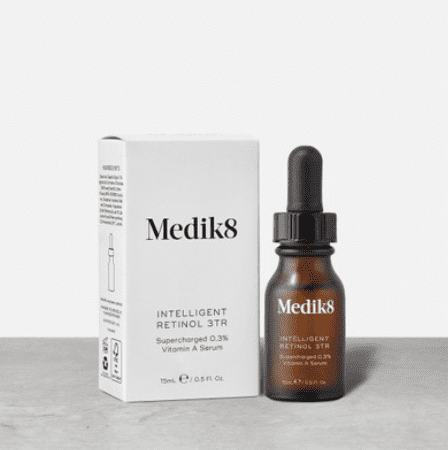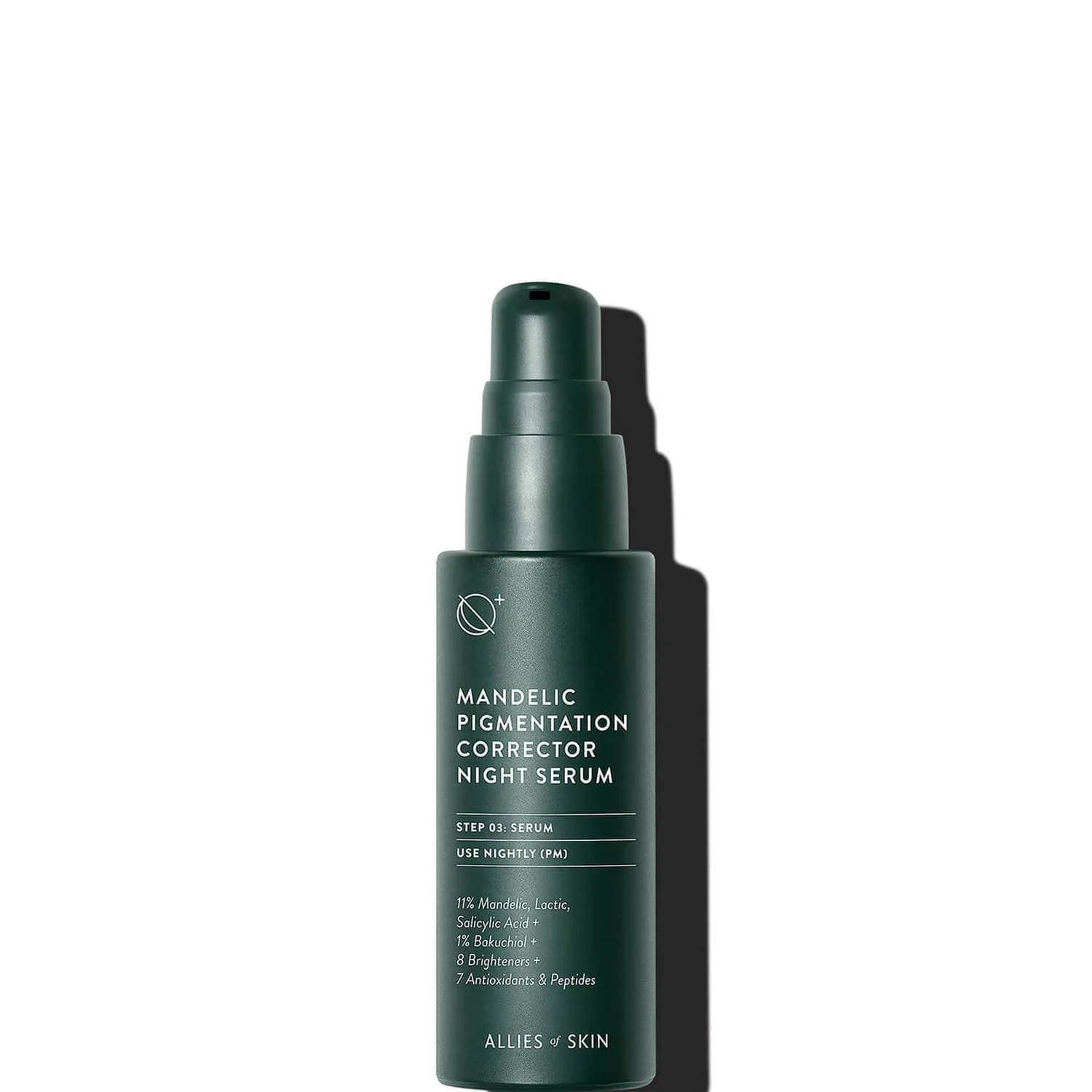Skin Bleaching & Skin Lightening
We’re in a space of no judgement, so let’s understand the complexities between bleaching and lightening and the product options available for evening skin tone and improving hyperpigmentation.
Historically, people of colour, especially us as a black community, haven’t had the easiest of journeys. With how the world is set up, our skin has often been the punch line or marker for injustice. The centuries of being defined by our skin colour, attached to racism and colourism, has also unfortunately played out in the skincare and beauty industry. Hence, there are many emotional ties and educational hurdles can make it difficult for individuals to find answers and solutions to concerns they may have about their skin tone and complexion.
Whilst we celebrate the beauty and uniqueness of each complexion, especially during Black History Month, it is also essential to see and acknowledge that sometimes people can be unhappy with aspects of their skin. Therefore, there must be safe ways to seek and explore treatment options.
Education is crucial to help people make the right decisions and to avoid damaging their skin if wishing to address discolouration and the tone of their skin.
THE HISTORY OF COLOURISM
Dating back to the Victorian era, skin bleaching was a fashion used by white European women to lighten their complexions. Society was so invested in the perception that the whiter the complexion, the purer you were, the more beautiful, intelligent, richer and advanced in society you were. This meant that anyone of colour was seen in the opposite light. A view that continued with slavery and the subjugation of black people, which still affects modern-day life.
Lighter skin tones were considered superior, especially in women of Asian or African descent. These skin types also have a high prevalence of pigment disorders. As a result, for some, skin bleaching came as a resolve for feeling unattractive, embarrassed about their skin colour, and a restricted sense of freedom.
SKIN BLEACHING VS SKIN LIGHTENING
The skin bleaching industry has an estimated value of reaching $8.9 billion by the end of 2027, according to forecasts by Statista, and the numbers are set to rise. But, two terms that often cross paths with very different meanings are skin bleaching and skin lightening. With two completely different results, it’s essential to understand their outcomes.
“The Skin Bleaching process involves using high doses of unregulated chemical agents on the skin to change the colour with irreversible results. Skin bleaching is usually a total body process where an individual wants to change their skin colour permanently.”
Common ingredients in skin bleaching products include Mercury, Hydroquinone and Corticosteroids, which can potentially cause dermatitis (general skin irritation) and can even effect how you think and feel. Mercury-related poisoning can cause irritability, shyness, tremors, changes in vision or hearing, memory problems, depression, numbness and tingling in hands, feet or around the mouth. Hydroquinone used in high & unregulated doses can cause exogenous ochronosis, when the skin takes on a blue/black colour that is very hard to reverse. Corticosteroids over long-term use can lead to patchy/mottled skin, deterioration of skin cells and risk of infections.
Less common, but still to be approached with caution, is intravenous Glutathione. High doses of intravenous Glutathione may cause: skin rashes, disrupted thyroid and kidney dysfunction as well as potential renal failure, severe abdominal pain, and hypopigmentation patches in sun-exposed skin, to name a few side effects.
But, there are subtleties. Busi Chamboko, from Second Skin Therapy and a Black Skin Directory Certified Practitioner, tells BSD that “hydroquinone is a controversial ingredient, yet, when used correctly, under medical supervision, and for a short time, can be beneficial for helping to even out skin tone. Over-the-counter hydroquinone products could be unsafe because they often contain other ingredients that could destabilise it.”
“The Skin Lightening process involves using approved skincare ingredients in safe doses to improve the appearance of the skin, especially where there have been concerns of post-inflammatory hyperpigmentation, melasma or sun damage that can darken the complexion. When used correctly, skin-lightening products can even out the skin tone by focusing directly on discoloured areas to create a more uniform complexion.”
HOW DO SKIN-LIGHTENING PRODUCTS WORK?
Melanin-producing cells are located in the skin's upper layer and are responsible for our skin colour. The enzyme Tyrosinase plays a significant role in the production of melanin, and for skin-lightening ingredients to work, this enzyme must be stopped or its activity reduced.
SKIN LIGHTENING INGREDIENTS
Hydroquinone: Often given a bad reputation due to its history of being used aggressively as skin bleaching ingredient, hydroquinone is an incredibly effective treatment when regulated and used under the strict supervision of a medical expert for no more then 3-6 months and at concentrations between 4-6%.
Cyspera: More recent to the market, Cyspera is a pigment corrector formulated with Cysteamine to improve the appearance of stubborn marks and dark pigmentation. It has the approval to be used over a long period. On average, 92% of people see an improvement in their hyperpigmentation. Cyspera is only available from qualified aestheticians and dermatologists.
Retinoids: More commonly known as Vitamin A, they help increase the rate of exfoliation in the skin and boost the skin's overall clarity by encouraging fresh new cells to the surface. Retinoids are as popular an ingredient in skincare products as is Vitamin C, and just like Vitamin C, not all forms of Retinoids are created equal. This is not necessarily a bad thing, as this leaves options for those with more sensitive to skin to those whose skin is more resilient.
MEDIK8 INTELLIGENT RETINOL 3TR
If Vitamin A is destabilised, there is no use in applying it. Medik8's serum is stabilised with vitamin E, so you receive both the benefits of the retinol to exfoliate and help skin texture as well as vitamin E to moisturise and nourish the skin to avoid any dryness.
LA ROCHE-POSAY RETINOL B3
This option is great for more sensitive skin types or those new to using Retinoids.
Exfoliating Acids: Think Kojic, Mandelic, Lactic and Glycolic Acid. These particular kinds of acids will help to gently exfoliate the skin and improve the appearance of dark marks and hyperpigmentation with continued use.
ALLIES OF SKIN MANDELIC PIGMENTATION CORRECTOR NIGHT SERUM
With 11% mandelic acid and salicylic and lactic acid, this serum is an excellent option for helping to lighten areas of the skin as well as treat uneven texture, large pores and in some cases melasma.
Niacinamide, Arbutin and Vitamin C: While these ingredients are milder, they are widely available and work in a similar way to reduce melanin production without damaging skin cells.
Here are some of our recommended products containing these gentle brighteners.
Remember that if using any of the above products and ingredients in your skincare routine you must apply and top up your sunscreen daily to avoid further discolouration or damage to the skin barrier.
TREATING BLEACHED SKIN
Treating the effects of skin bleaching can be challenging and time-consuming, involving chemical peels, lasers, sunscreen, and topical skin care products. Additionally, not many places can do this effectively.
Busi shares, “Realistically, once the damage is done and skin is experiencing Exogenous Ochronosis (where it starts turning a darker shade), it is challenging to restore the skin to its original condition, and there may be limits as to what can be achieved in clinic and expectations have to be managed.”
So, it is fair to say that the idea of skin bleaching and skin lightening will always remain a sensitive and controversial topic. However, it is important to discuss safe options to avoid potentially irreversible skin damage from bleaching agents and damage to esteem.
We strongly advise that you seek professional or medical advice when wanting to address hyperpigmentation and any issues related to your complexion or skin colour.
This post features several affiliate links, meaning Black Skin Directory will earn a small commission if you purchase through these links. For further information, see our Terms & Conditions.








